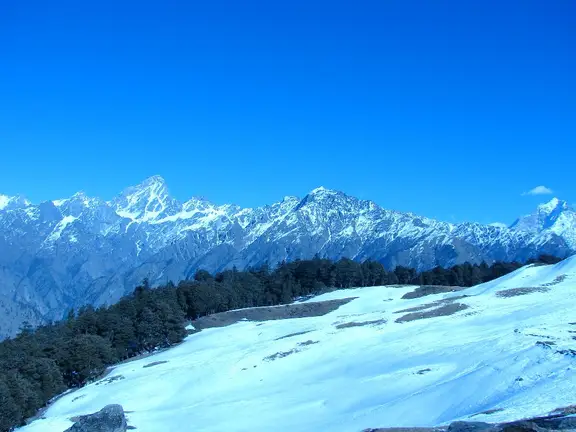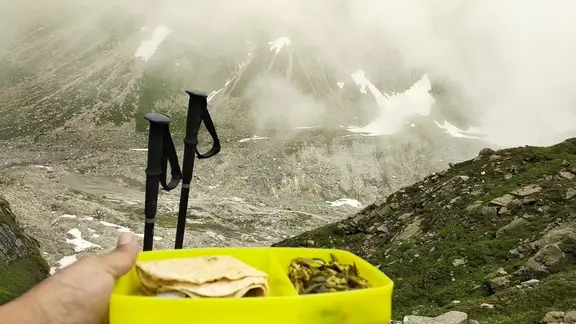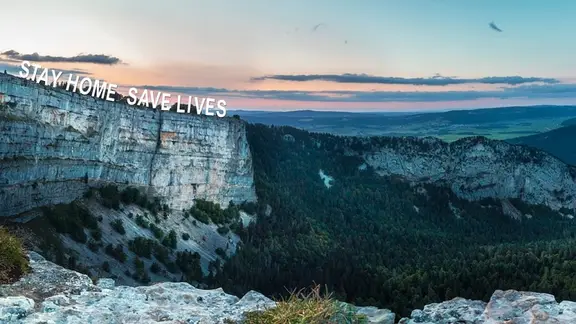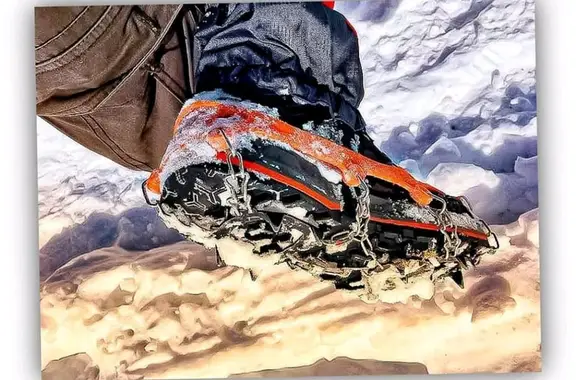Cooking At High Altitude
As interesting a sports Trekking seems to be, the challenges that it serves you always end up taking the bigger portion of the plate. Travelling at high altitudes for either sports or recreational purposes or even both brings up a challenge to the human body in terms of physiological, physical and mental aspects and the physical strain and exhaustion that it involves, makes it essential to always keep the body fueled and charged up to undertake all the endeavors
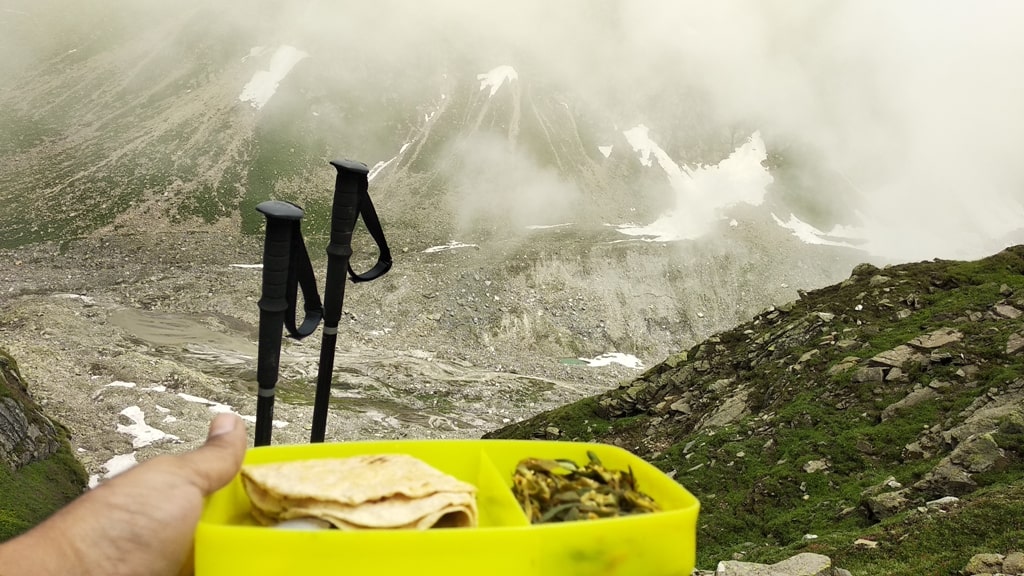
Cooking at a higher altitude not only requires usual kitchen-like cooking skills, it rather demands the knowledge and the technique that's required to make things to work at the specific atmospheric conditions. At high altitude, the composition of air results in less oxygen due to low atmospheric pressure which further affects both the time and the temperature of cooking. At an altitude above 3,000 feet, special methods are needed for cooking. The freezing weather amidst the mountains, conditions also add further to the challenges. Above 2,500 feet, the atmosphere becomes much drier. Moisture quickly evaporates from everything. The areas at high altitudes are also prone to less humid weather conditions, which leads to more loss in moisture from food during cooking.
Local Food/Local Cuisine
Falling along the borderline and sharing borders with three different countries bestows its local cuisine with the possibility to be an amalgamation of the unique food culture of Chinese, Nepalese, Indian, and Tibetan food favorites. From the most common eatables including Momo, the popularity of which is not unknown to any Indian and Tea which is less of a beverage and more of emotion to the unique dishes such as Hard Dried Yak Cheese- rock-solid sweets hung from roof rafters in a roadside shack which is a favorite amongst Himalayan nomads, Thukpa- a bowl of fresh ingredients and happy additions of local meats to Dal Bhaat (Lentil Soup)- Cooked lentil soup (Dal) served with steamed rice (Bhat).
Cooking at High Altitude
Though the habitable areas and the villages with adequate settlement do offer favorable food facilities but trekking doesn't come that easy, most of the routes of the treks make their way through the unnavigable and inhabitable areas with no localities and no local cuisines thereby. Therefore basic knowledge and preparation for cooking at high altitudes become necessary.
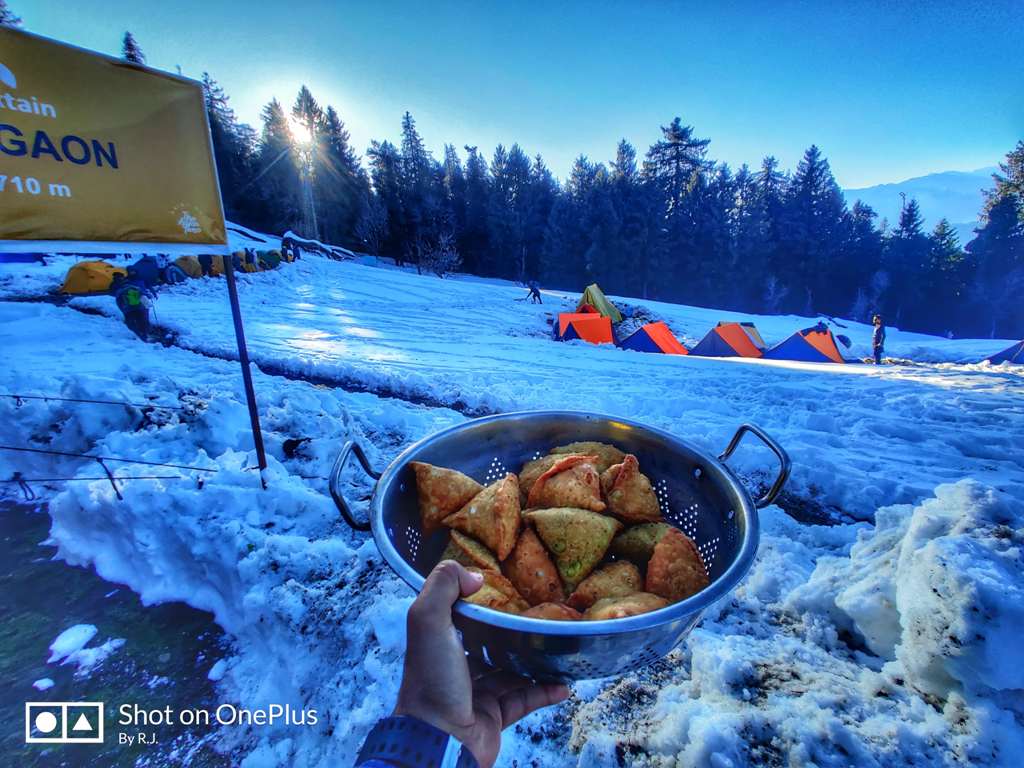
Also apart from the special techniques required for cooking at high altitude, cooking resources are unique themselves as well. Liquid and multi-fuel stoves might result in helpful at cooking in the weather conditions at high altitudes but only if it can be arranged from the local surroundings because carrying them might not be possible therefore resorting to the traditional method - to light an old-fashioned campfire for cooking. However, because of the scarcity of wood above the tree line, gathering the resources can be very challenging and lighting the fire in the freezing conditions can pose a difficulty as well but with the guidance of the experienced mentors and the help of the kind localities, you are always well placed.
- Boiling at high altitude:
- Cooking Eggs:
- Hydration:
The higher the altitude, the lower the atmospheric pressure, in turn, and water begin to boil at a temperature lower than the usual one. The water boiling temperature at 3000m is 90°C and it gets lower the higher you go. This means that the cooking time of foods that are prepared by boiling or simmering is increased. Another important thing regarding cooking at altitude: the lower humidity will cause the moisture to evaporate more quickly drying food faster. To avoid this, cover foods during cooking.
Eggs take longer to get cooked at a higher altitude, especially the ones cooked in boiling water such as poached and hard-cooked eggs. As the water boils at a lower temperature at high altitudes, it takes more time for the hard-cooked eggs to prepare. It will most likely take longer to hard cook eggs at high altitudes Many cooking methods can be used to cook eggs safely at high altitudes including poaching, hard cooking, scrambling, frying, and baking. Therefore, it is advised to increase the cooking time and not the temperature.
Dehydration is one of the most common and fatal problems encountered by the trekkers therefore understanding the water requirements of the body at a higher altitude is extremely essential. Low temperatures and the high altitudes, the constant perspiration due to the physical workout, the atmospheric conditions are bound to increase the water intake requirement thus hydration at regular intervals become essential.
How Altitude Affects Digestion
For easier understanding, the whole phenomena can be broken down into simpler terms through the popular example of the inflation and deflation of a regular air balloon. As soon as the mouth of the balloon is left open, the gas presented inside escapes immediately to the outer atmosphere due to the phenomena of diffusion i.e., the movement of the gaseous molecules from a region of higher concentration to the region of lower concentration. Similarly, due to the differences in the pressure at high-altitude, the gases in our blood vessel also diffuse out to our gut. This condition is called as HAFE (High-Altitude Flatulence Expulsion).
As said by eminent doctors and health researchers, carbon dioxide is dissolved in our blood and as the atmospheric pressure lowers down, the gas that's dissolved in the blood tends to leave the liquid due to diffusion. Therefore, this escaping of gas results in the expansion of the gut and thus causing flatus. This increases the stress on the bowels, thus making it prone to digestive disorders.
Why Should Non-Veg be avoided at High Altitude
As it has already been stated that due to the change in atmospheric conditions our digestive system is already under great stress. Non-vegetarian is food has an immensely rich protein content which further stresses the already stressed digestive system which makes one more prone to HAFE and other similar stressful disorders. Protein intake is undoubtedly essential to provide the body with the strength to bear the physical strain that's encountered while trekking but the intake should be made considering that it doesn't lay immense load on the digestive system. As of result of these factors, non-vegetarian food is not advised while on trekking to enable a smooth course of events without putting health in danger.
Another reason non-vegetarian food is neither recommended nor provided is that they are perishable. Their perishable nature makes them unfit for consumption while trekking because while trekking facilities required for the preservation of these eatables, such as refrigerator, etc. won't be available, as a result of which the food is more likely to perish and grow stale.
Nutritional Intake Advised
Having stated the importance of protein intake, the advised source of protein are sources such as Soybean chunks, chickpeas which can easily provide you the required nutrition without upsetting your digestive system and there’s an added advantage of cooking them fresh on long treks as opposed to carrying preserved meat.
A research conducted by British Nutrition Foundation proves that a person practicing exercises like trekking should have the following nutrient profile in his/her diet: 45-65% carbs (5-8 g/kg/day), 10-35% protein (0.8-1 g/kg/day) and 20-35% fat (0.5-1.5 g/kg/day). On average 7 calories/kg/hr is burned by a person while trekking. That means a trekker who weighs 50kgs will lose 350 cal/hr. Therefore, to replenish this to receive optimum nutrition while trekking, a ratio of 3:1 carbs: protein is recommended.
What Should One Eat
As trekking is a strenuous activity, it requires the body to be energetic therefore, one must consume the food which helps in providing instant energy i.e. the food rich in carbohydrates as their easy breakdown provides instant energy. The food can include Corn Flakes with milk, or wheat rotis with chana dal, kidney beans, Oatmeal with raisins, flax oil or butter and nuts for breakfast, etc. Eggs are another great option during treks if consumed moderately. They help to replace muscle protein during trekking activities. One should also keep some dry fruits handy as it’s a good source to keep your energy levels up.
Hot Water Availability
The most common query observed amongst the trekkers is regarding the availability of hot water. Hot water is made available by our cooks for drinking or any other medicinal purposes but for other miscellaneous purposes such as bathing, it might not available. Since the trail of trekking makes its way through remote villages or even inhabitable areas where electricity is unavailable it becomes impossible to provide hot water and even if electricity is found somehow electric appliances such as geysers, electric rods, etc. might not be available. Although our team tries to make the arrangement possible while at the stay at the guesthouses due to the unavailability of electricity in most of the places, it might not always be possible to provide the facility of hot water.
Importance of Punctuality and Hygiene
The lesser-known yet one of the most important facts about trekking is the key role played by punctuality and hygiene. Trekking is an activity that falls in alignment with the hands of the clock. It is very essential to follow the itinerary as planned by the experienced individuals to carry out because all the activities are lined up in change. Itineraries are framed with many considerations as to what time is suitable for which activity in accordance with weather conditions affecting the safety of the trekkers, and delay at any point further disrupts the whole chain as a whole. Therefore for a smooth course of the event, punctuality holds great importance.
Also, maintaining personal hygiene can be a difficult task during trekking which further stresses the importance of the same. Trekking brings you across the situation when practicing the basic hygienic habit of bathing as well might not be possible. All-day long physical labor can make you sweat and stink therefore it is extremely essential to maintain hygiene. It doesn't only keep you fresh but also helps you keep diseases and infections at bay while you spend yours amidst the wilderness. Basic habits such as changing clothes at regular intervals, taking bath wherever possible, and resorting to dry bath whenever not and other such activities can be easily adapted to take care of personal hygiene.
While trekking, helping yourself with just the right the food with the adequate nutritional content that prepares you for the physical hard work can pose a great difficulty but not if you're well equipped with the prior knowledge which this article aims at and the saying never gets old, "After a day’s walk, everything has twice its usual value" and therefore with all its challenges, it's always worth the pain.



